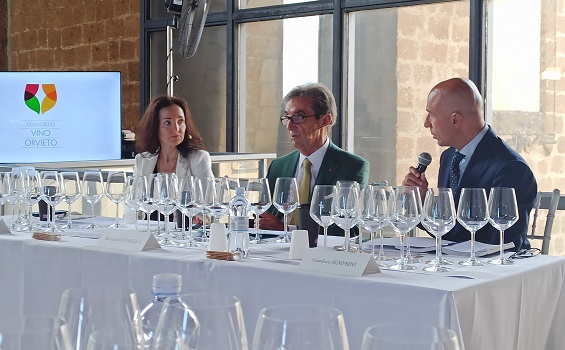The event held in Orvieto last weekend gave us an opportunity to make some reflections on the area. We welcome the proposal to create the Riserva type, given the excellent results shown by a consortium vertical of 13 vintages, with great predisposition to longevity.
There are certain mysteries in Italian appellations and these mysteries occur with some frequency in certain territories with common characteristics. They are not pedoclimatic, viticultural, oenological but above all “environmental” characteristics so much so as to suggest that there is a losing but repetitive pattern that tends to drown historical realities that had a certain notoriety abroad: some might think that therefore they are not mysteries but ours are just simple suppositions and we would like to be wrong and make amends.

Think, for example, of Chianti, Custoza or Orvieto, with a multimillennial winemaking history of great bianchista quality, which has disappeared from the spotlight of enthusiasts and the press for so many years.
History going back to the Etruscans, we said, obviously then the wine was different but then always mentioned in the various centuries. Thanks to the cellars dug into the tuff on various levels the wine remained stable, giving smells and tastes unknown to other wines in the many centuries that Orvieto has gone through always with qualitative superiority. Soils from tuffaceous to dark volcanic, sandy and medium clay areas also give a plurality of possible interpretations that are truly compelling thanks also to the possibility of blending the grapes present.
The grapes that make up Orvieto are mainly Procanico (Tuscan Trebbiano) and Grechetto, together for a minimum of 60 percent. The missing 40 percent can be made up not only of the historic indigenous grapes (Verdello, Drupeggio and Malvasia) but also of the other white grapes allowed in Umbria, such as Chardonnay, Pinot Bianco, Müller Thurgau, Pinot Grigio, Riesling, Sauvignon or indigenous grapes from other regions, such as Verdicchio, Falanghina, Bellone or Bombino bianco. And here we play a bit with the relevance to territory and tradition. Perhaps this, combined with the fact that more than half of Orvieto is bottled outside the area, contributes to the fact that unfortunately prices (of grapes and bulk) remain really low and the value of the vineyard has not increased either.

Despite everything, Orvieto endures and shows off its incredible aging capabilities, as the recent tasting organized by the Consortium during the Orvieto diVino event demonstrated. A vertical tasting (unfortunately totally blind, the names of the producers were not revealed) from 2022 to 2010 that gave unthinkable and unexpected emotions. Interesting and multifaceted aromas and above all rich, enveloping, intriguing flavors despite the obvious differences.
During the vertical Riccardo Cotarella, president of the technical committee of Orvieto Doc launched a brilliant idea, enthusiastically welcomed by journalists and enthusiasts: to create the Riserva type, with a new specification and involving the release on the market at the third year after the harvest and with a composition of grapes that we would like very much oriented on Procanico and Grechetto with the historical natives, like 85-90%, total freedom in the type of aging (steel or wood or amphora) and closed chain.

We really hope the idea goes through, it would have an important territorial value by bringing together the centrifugal forces that have led many good producers to undertake extra consortium initiatives to enhance Orvieto.
Despite the aforementioned problems, there are a dozen or so producers who still believe in it and make incredibly good and long-lived Orvieto, committing themselves to showing the territorial differences that are enhanced by them. Decugnano dei Barbi, Palazzone, Le Velette, Barberani, Argillae, Madonna del Latte, Mottura, Castello della Sala, Cantine Neri, are wineries that enhance the territory. Some of these agree to avoid resorting to “exotic” grape varieties, others do not share the issues exposed for the sake of the record, trust the company brand and/or sell some of the wine or grapes to someone; the “purse” is full and “it is not up to me to go against windmills.” Happy Orvieto to all.



